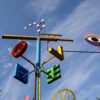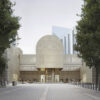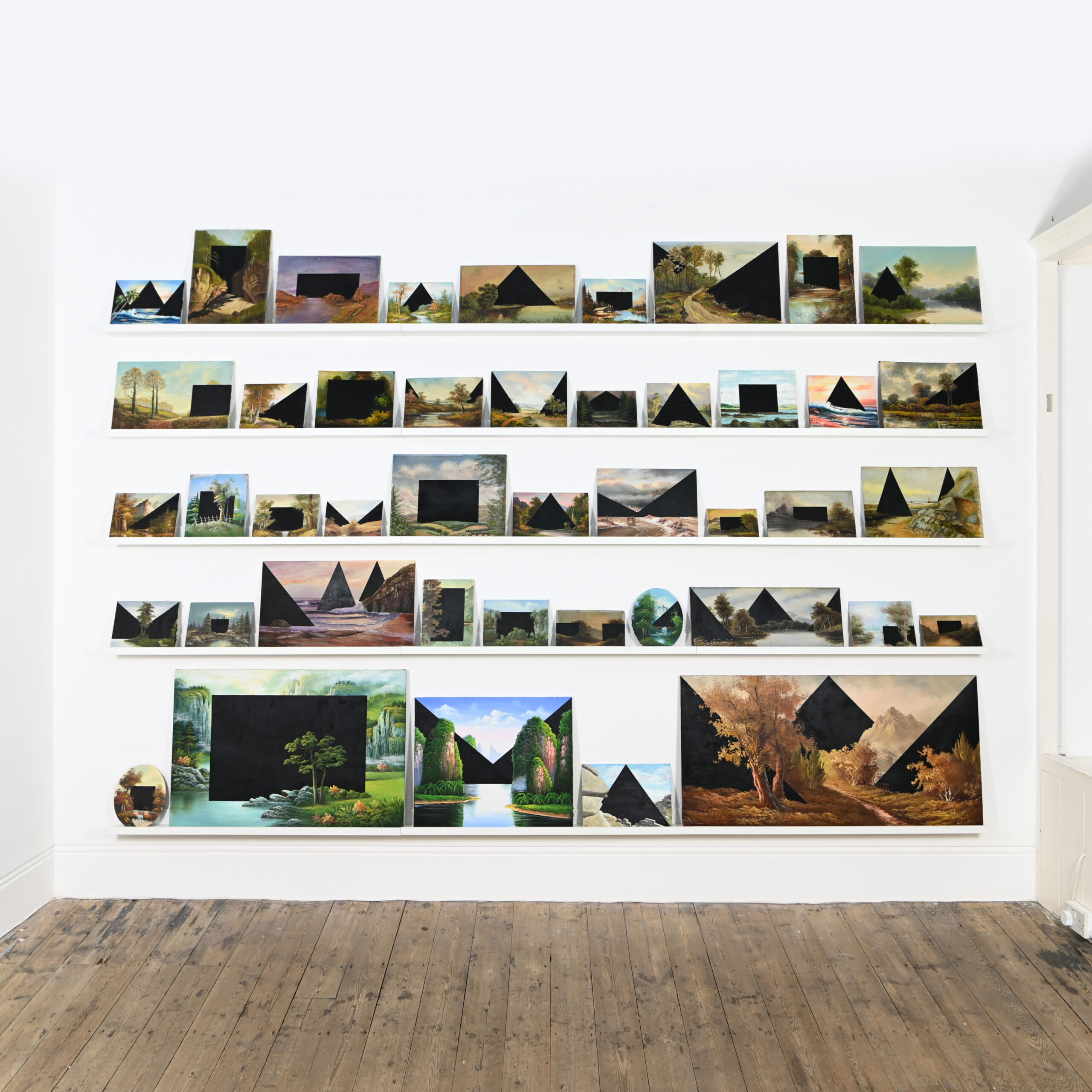
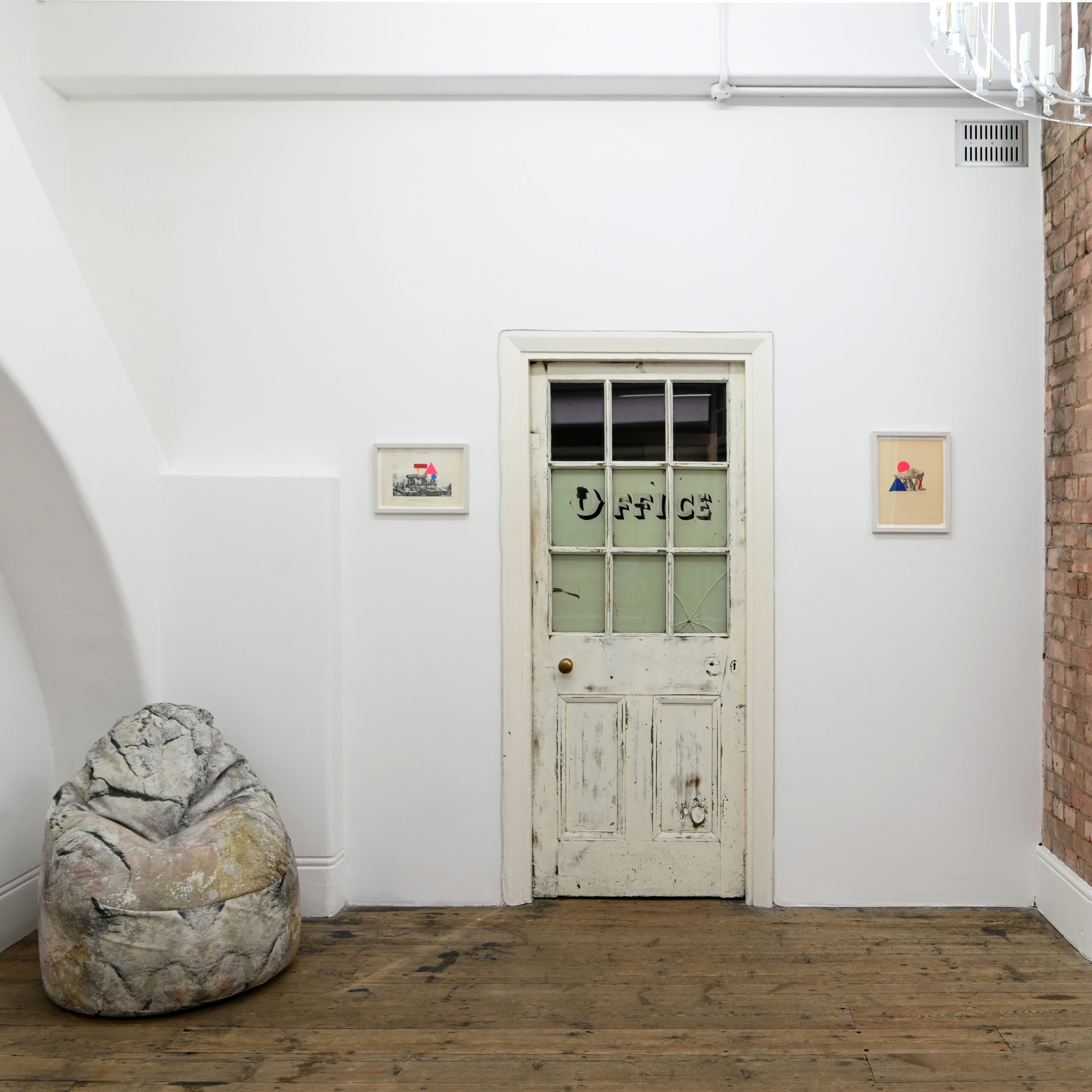
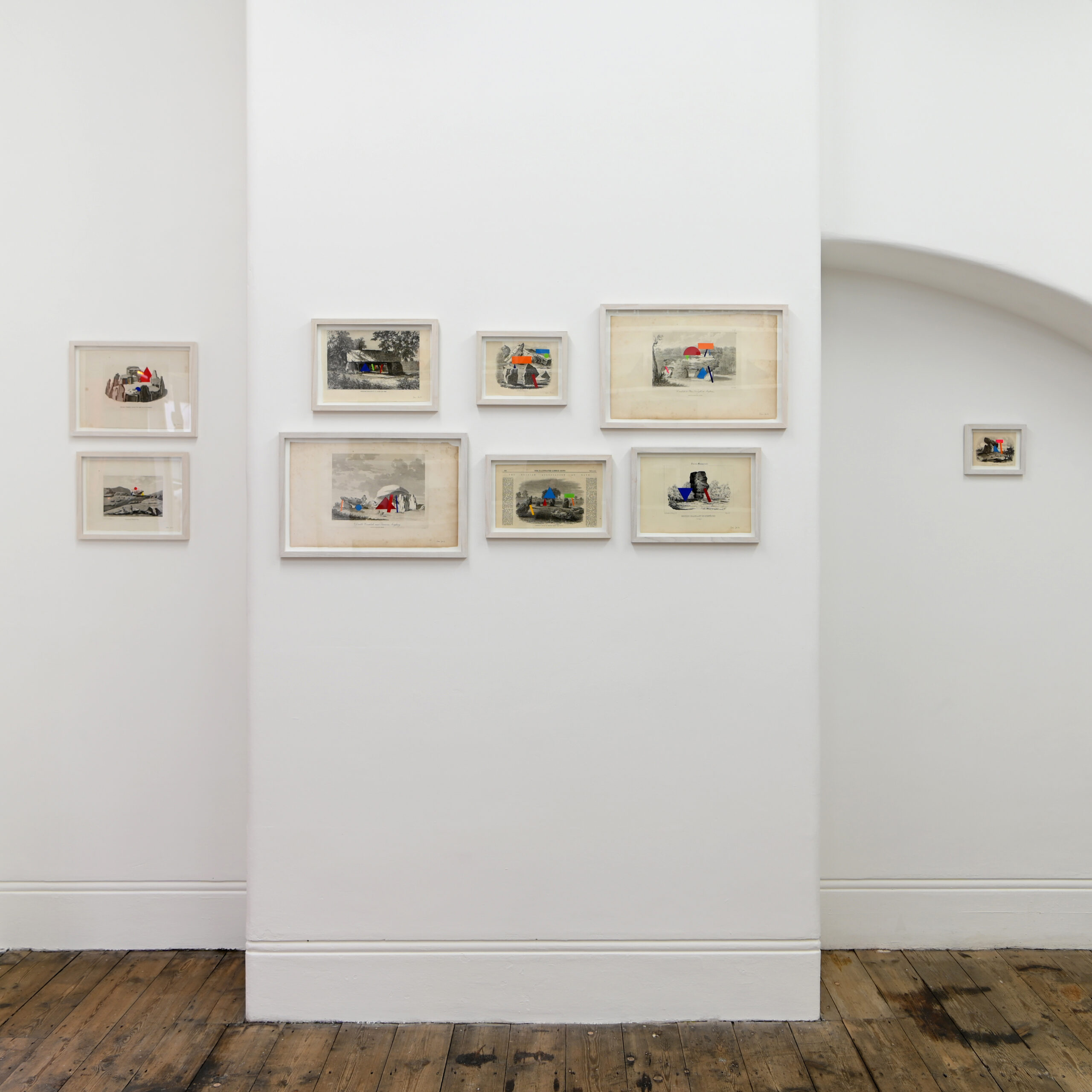
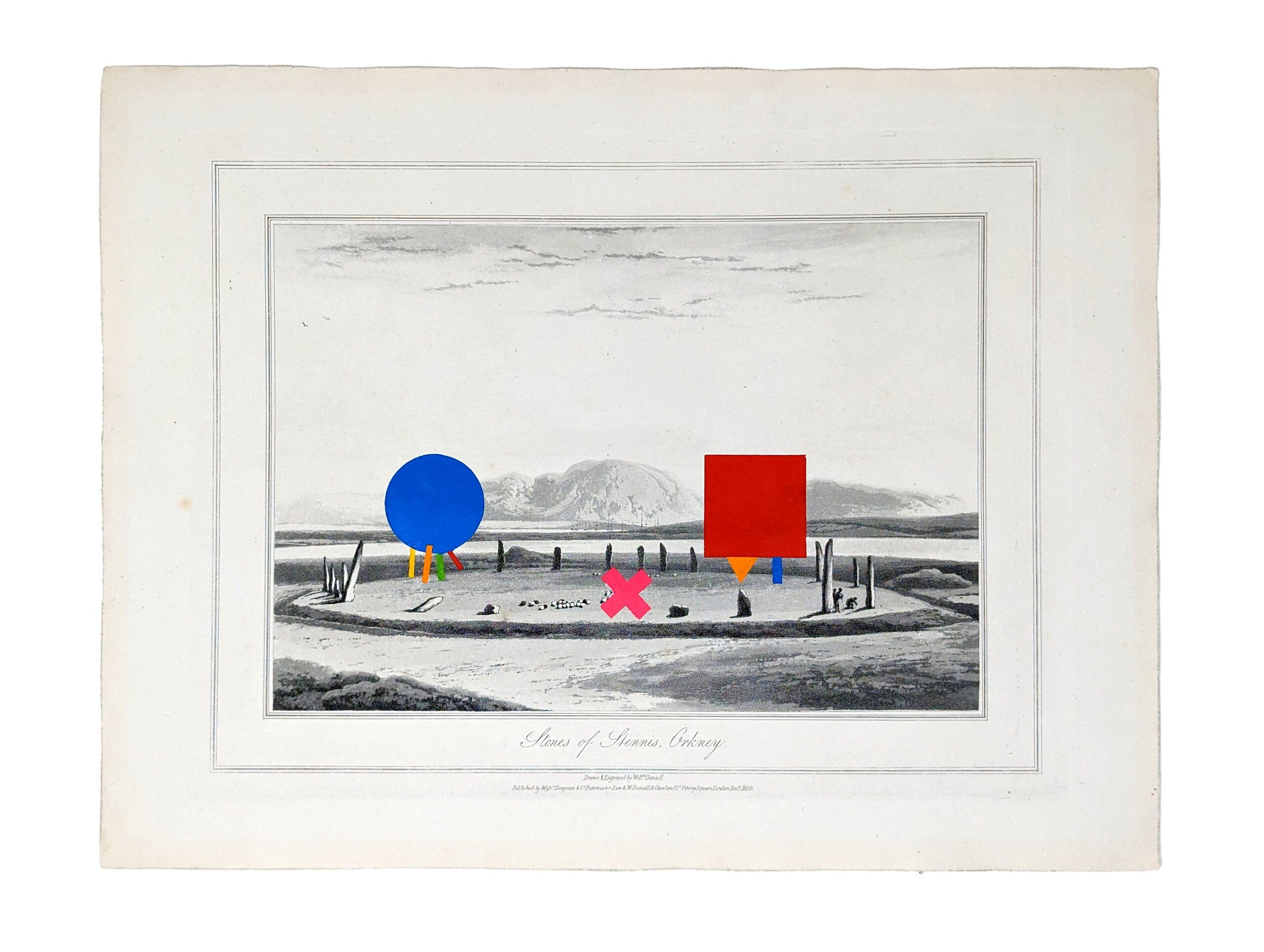
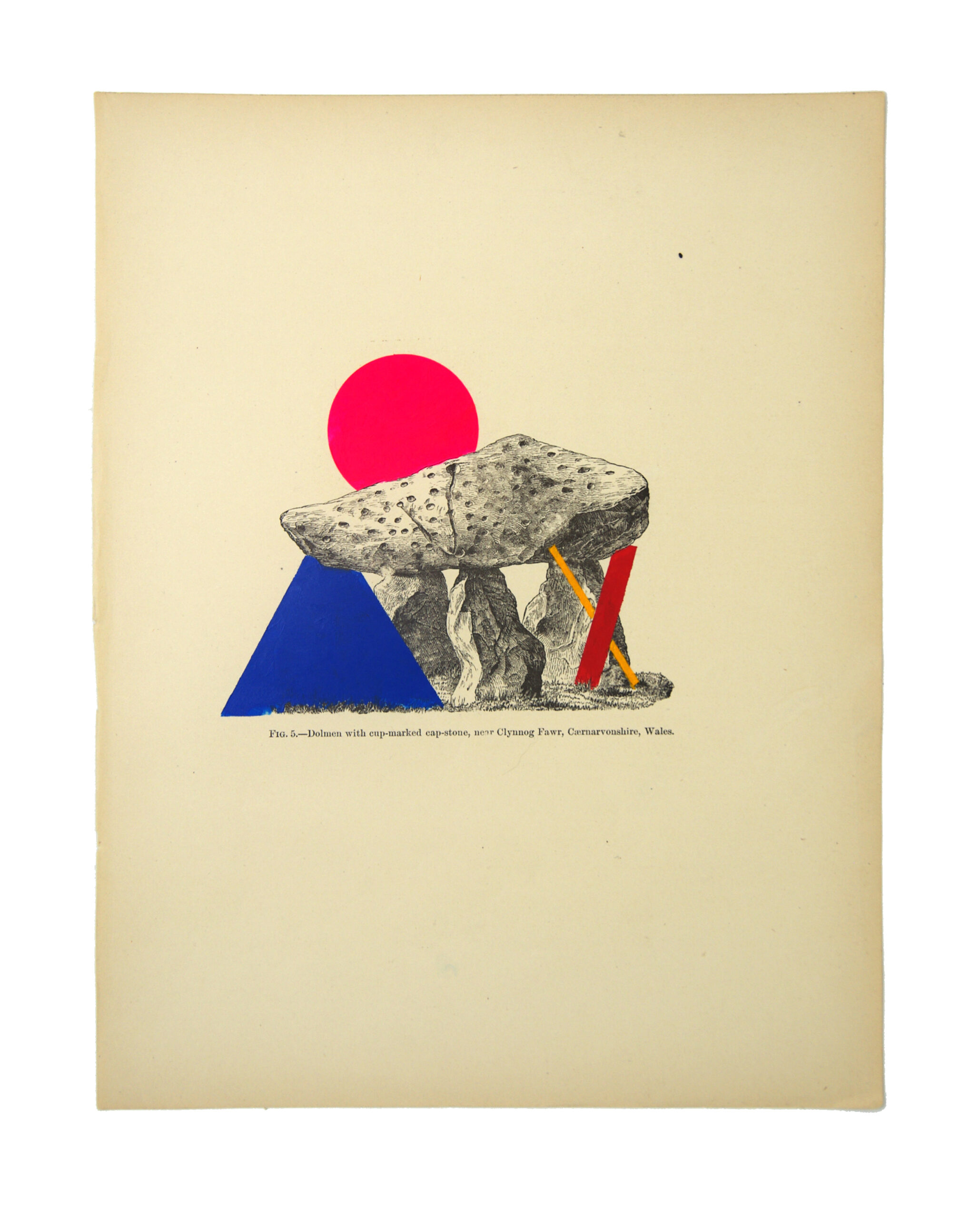
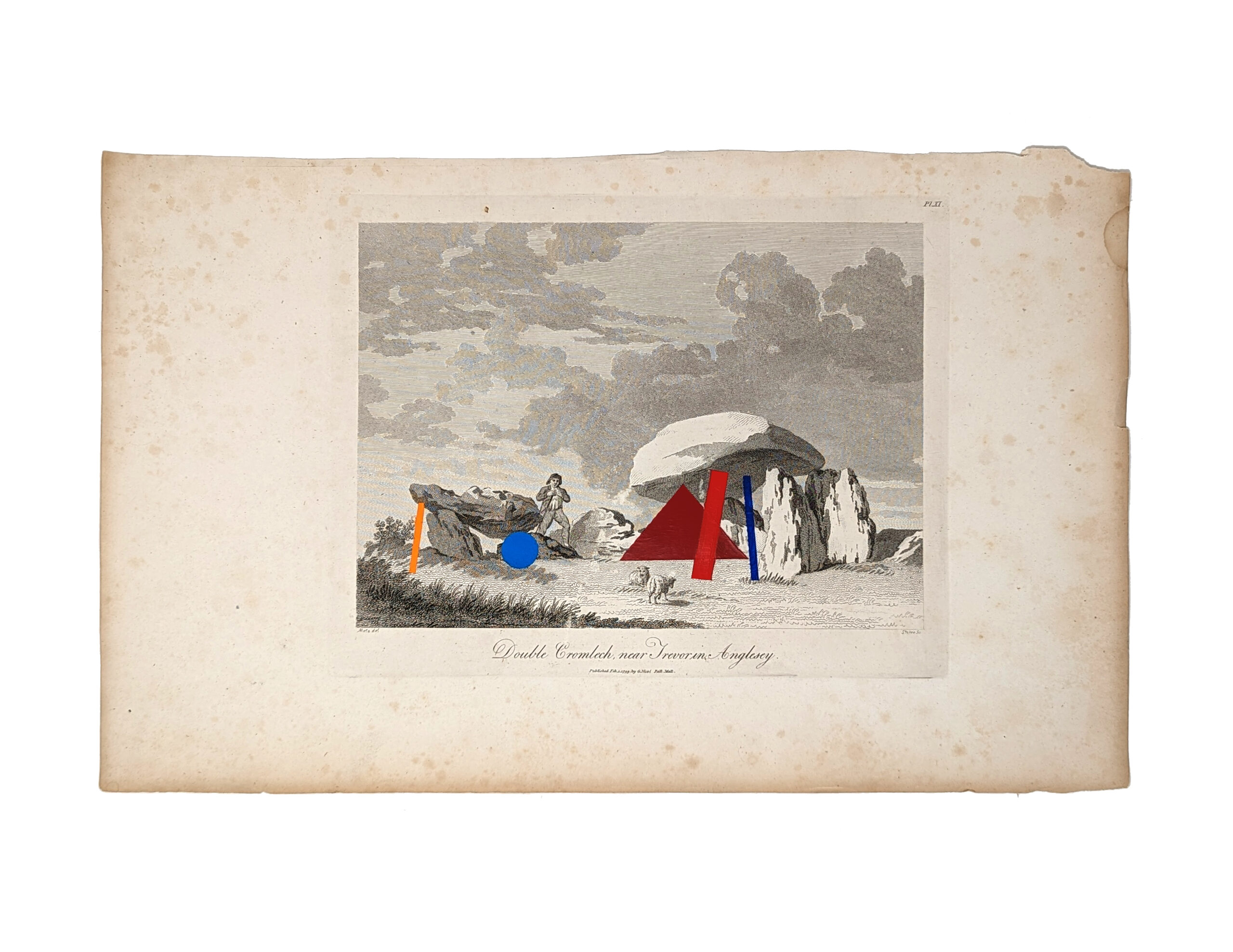
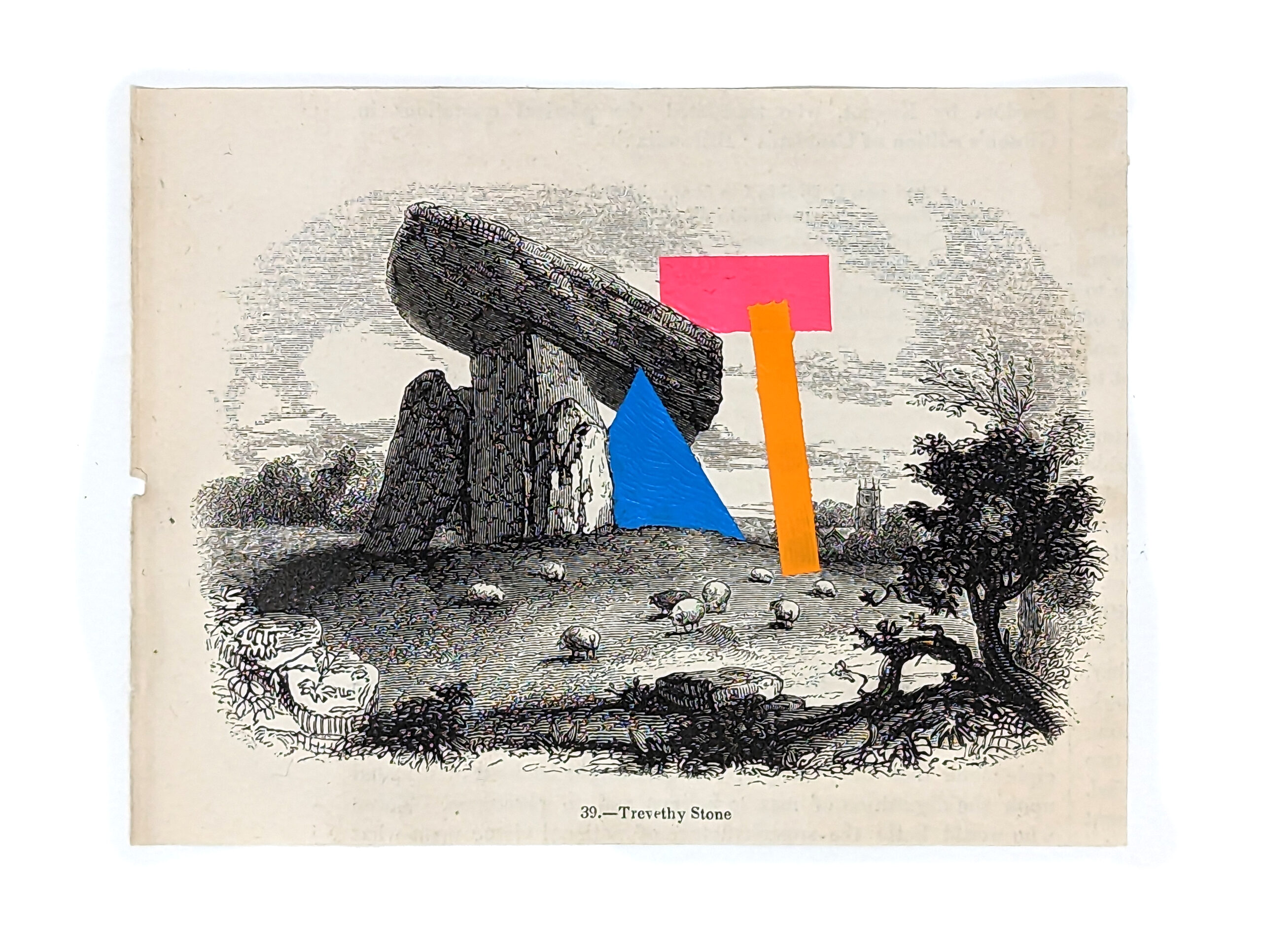
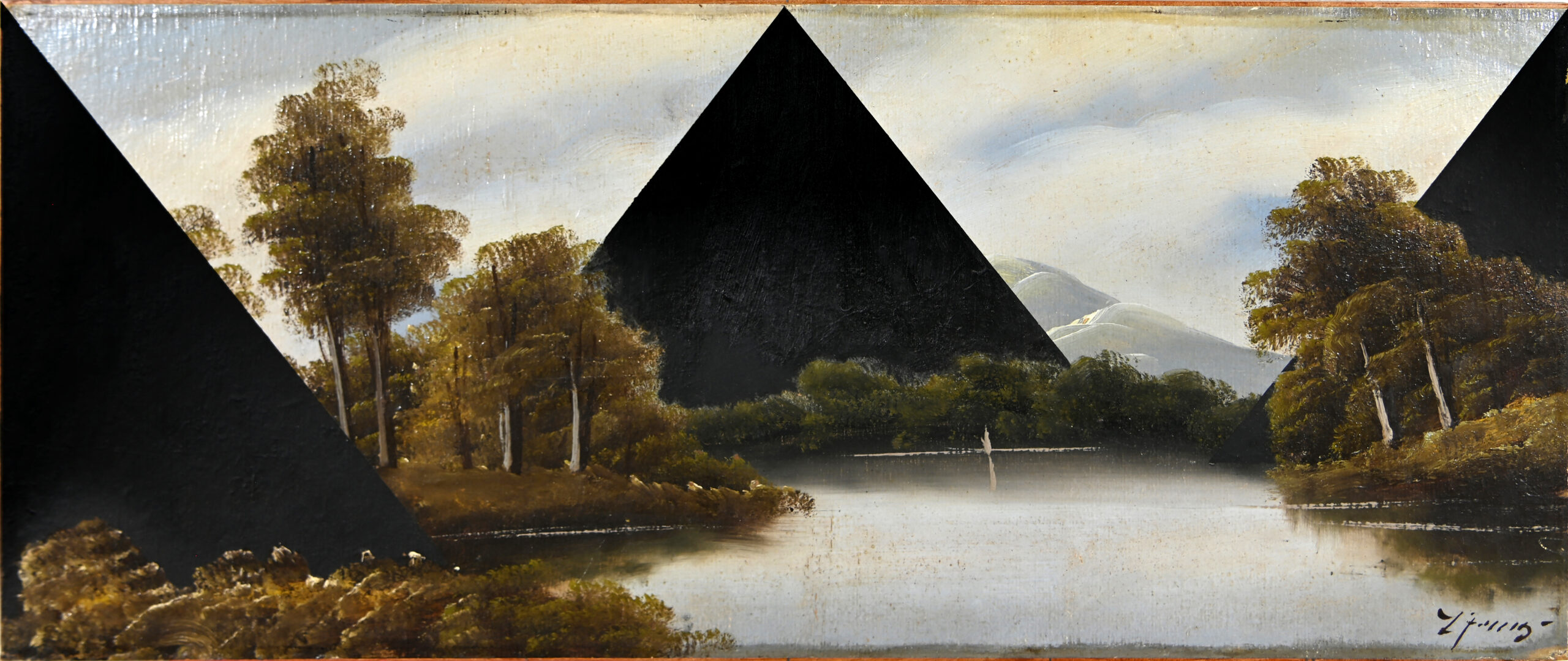
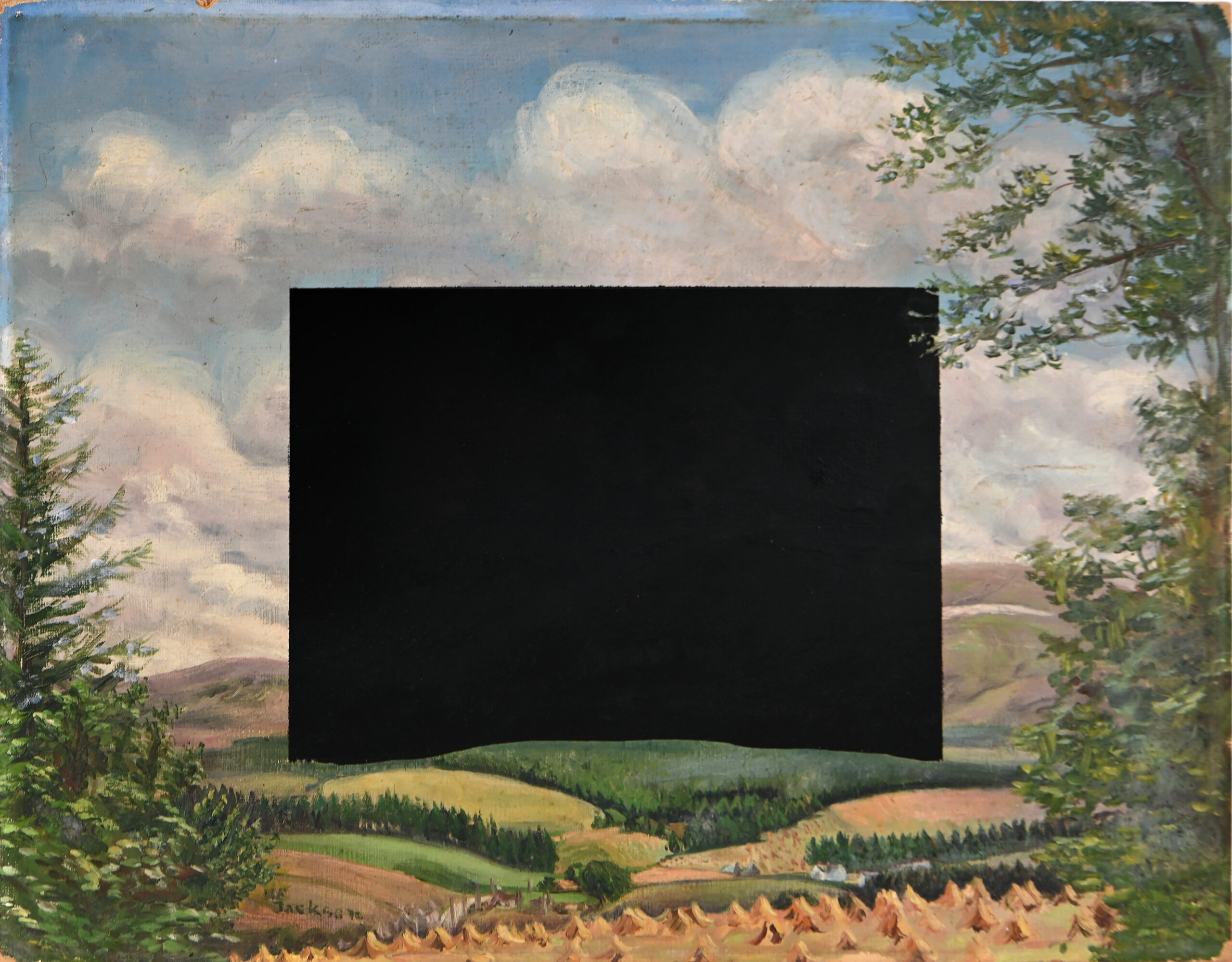
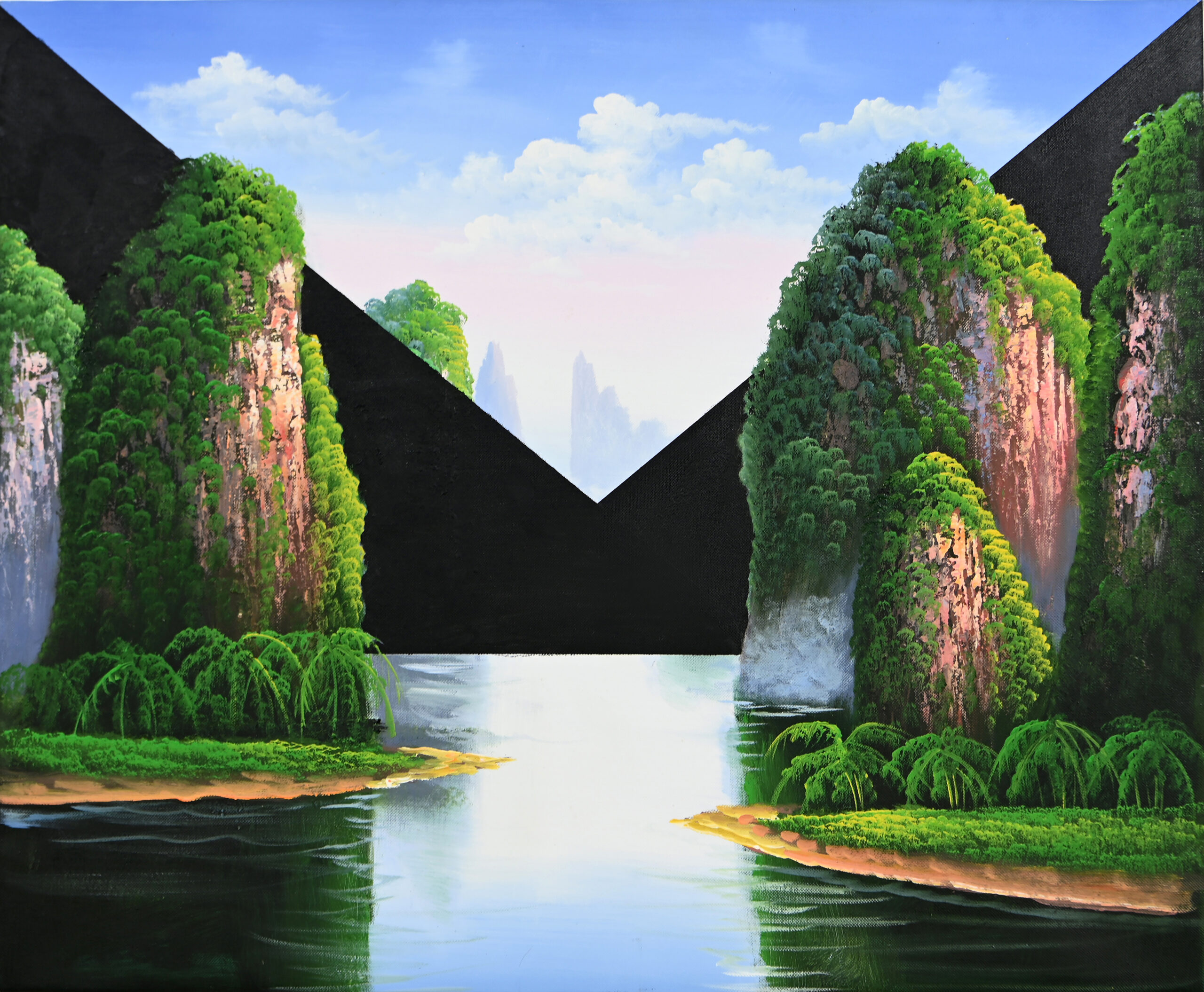
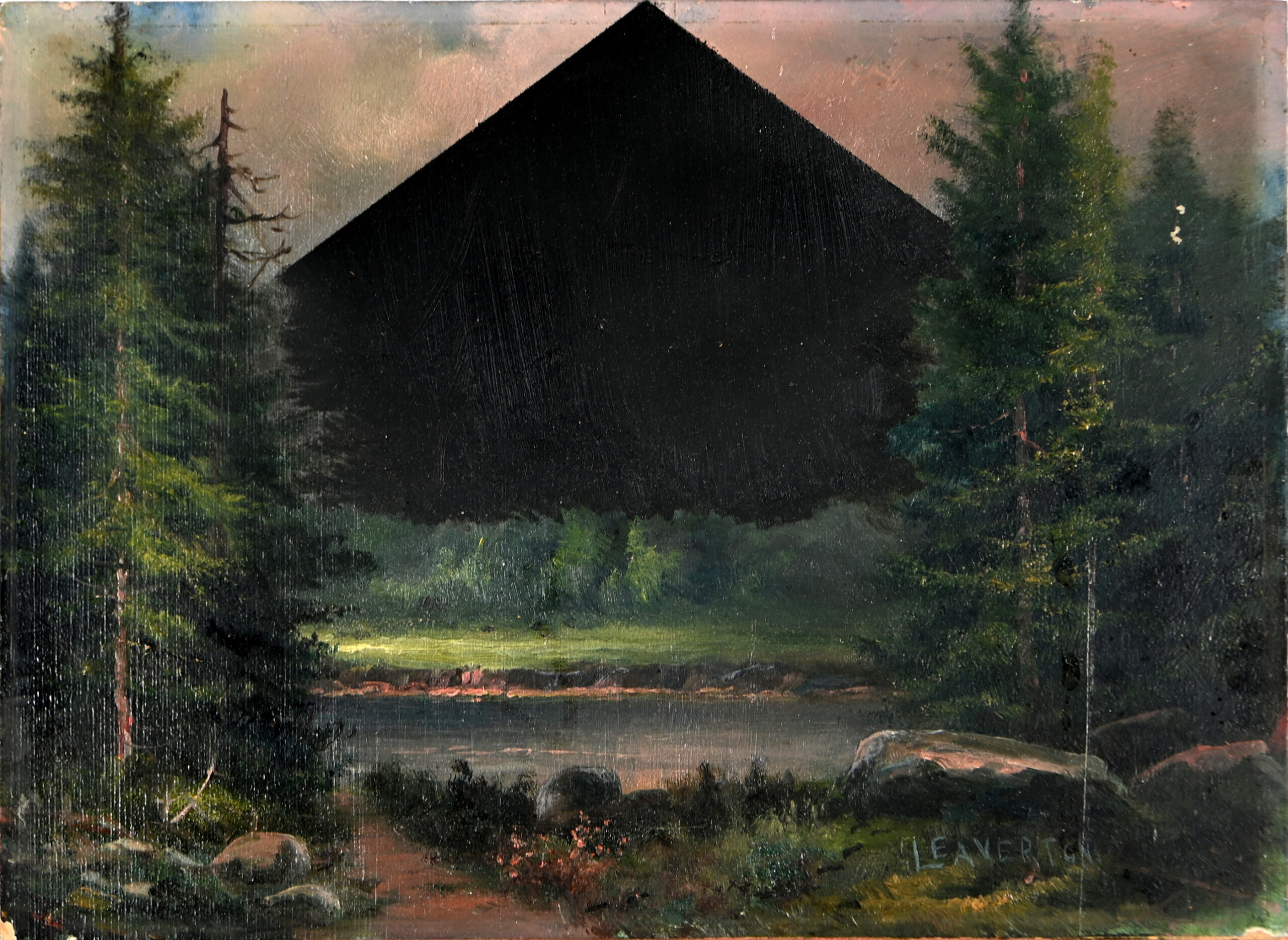
Against Nature
‘Against Nature,’ was Sam Jacob’s second solo exhibition at Betts Project. It was is an exhibition about architecture, landscape and nature. It was also about the guilt, power, loss and hope intrinsic to architecture.
Architecture is always against nature. Against as in next to. Against as in contrasting. Against as in protecting. Against as in anticipating. Against as in resisting. Against as in facing. Against as in touching. Against as in challenging. Against as in opposing. Against as defending. Against as defying. Against as a debit. Against as towards. Against as before. Against as comparison. Against as compensation. Against as contradicting. Against as preparation. Against as in supporting.
Architecture is, fundamentally, the imposition of a different order upon the world. An order that manifests abstract ideas as new realities. These idea-realties radically reorder the world socially, politically, economically, environmentally and symbolically. Architecture proposes new versions of the world and new ways to be in those worlds.
Against Nature features two new series of works by Sam Jacob. Ritual Litter features additions of coloured elements to antique prints of neolithic monuments. Against Nature is made up of found landscape oil paintings with black geometric forms painted into them.
These traditions of landscape and objects-in-landscapes come with their own ideas about separation from and remaking of nature. Their reworking suggests architecture’s symbolic and ritualistic power to summon new kinds of world and new ways of being in the world. To rearrange the world socially, politically, economically, and environmentally. Architecture as a conceptual act projected onto the land that contains the possibility of liberation, and the potential to reconstruct the home we have never had.
Against Nature (the Paintings)
Media: Second hand paintings, Oil additions, 2022 / 23
In the picturesque, languages of landscape (plants, trees, hills, lakes etc) and of images (framing, composition, surface etc) merge. The boundary between the physical world and the image world becomes porous: Picture is landscape and landscape is picture.
Landscape is, of course, not nature but an ideological construct. And, like all ideologies, most pernicious when presenting itself as ‘natural’. Traditions of the picturesque, from Poussin to Bob Ross, from Capability Brown to the Chelsea Flower Show are political ideas about land. They frame ideas about ecology, labour and ownership through aesthetic languages. Images of landscape have transformed the earth itself (rivers dammed to form lakes, trees rearranged like still lives, villages wiped out in the name of ‘view’), and continue to frame contemporary debates around land use and sustainability. Attitudes to planning policy for example are influenced by hallucinationatory ideas of ‘nature’ and ‘beauty’ with their roots in cultural histories, images and forms of representation.
The Against Nature series are made up of two elements, paintings bought from eBay and black geometric forms painted into them.
- Sickly sweet descendants of the picturesque of various quality, age, style and provenance. These are used in as-found state, complete with their own damage, dirt and faults as if they themselves were landscapes.
- Black forms derived from the geometry of the frame – halves, thirds, diagonals from corner to corner, ratio-ed rectangles.
The geometry of the shapes contrasts with the landscape, interrupting the fiction of the (mostly fictional) landscapes, interrupting the logic of one form of representation with another (modernity, abstraction etc against nostalgia, representation etc.)
The combination creates spatial and representational ambiguity. Their form is both part of the physical artefact of the painting-object as a 1:1 landscape itself, but also exist within the pictorial depiction of landscape. The flatness of the surface and depth of the representation are present simultaneously. They simultaneously read as things in the landscape and shapes on a canvas, as two different competing ‘realities’: The fact of the canvas, the fiction of the picture. As erasures / additions, as blankness / content, as voids / solids, as pictures / measurements, as something directly in front of you / something distant.
The series depicts landscape as political fiction, as contested cultural terrain.
Ritual Litter
Antique prints, acrylic interventions, 2022/23
“Setting up great stones was an enormous psychological act, further removing the agriculturalists from their formerly harmonious relationship with the earth. And it is that initial separation from the earth, over 5000 years ago, which has opened up into such a great cleft over the ensuing years and caused so great a feeling of cultural dispossession and hopeless guilt”
Julian Cope, The Modern Antiquarian
The Arch Drood says that architecture is both original sin and the possibility of liberation. Neolithic monuments – circular mounds, erect stones, lintels – are models of the world, models of home, models of our place in the world. Built with the utmost spatial precision for rituals we can only guess at. Expressions of separation from the world, representations of everything we have lost and devices that might help us find our way back. We were always modern, always displaced, always trying to recreate the world as it might have been or could become. There was never an Eden, only attempts to manifest it.
The series features geometric coloured elements added to antique prints of neolithic monumental structures. They accentuate the original’s composition of elements assembled and recast them as contemporary, as abstract ritual devices for non-specific enchantments and disenchantments.
Beyond use, liberated from meaning, yet possessing profound spatial and formal resonance, they recall Adolf Loos’ description of finding a mound in the woods: “We become serious and something in us says … This is architecture.”
A Perfect Zero (Neon Stonehenge)
Neon, Acrylic, 2023
Stonehenge has been: a Roman / Buddist /Jewish Temple, it’s been magically transported from Ireland by Merlin, a place of wild revelry and intimate tragedy, abandoned and discovered, a clock and a computer, a device and a place, a symbol of the counterculture and revolution as well as conservatism and nostalgia, a place where things end and others begin. It continually surfaces from its pre-history as though it were brand new.
Stonehenge’s massive presence is in direct disproportion to the little we know about what it was supposed to be. This lopsided disparity liberates its form from any singular or particular content. Stonehenge becomes a sign without a meaning. Or so many possible meanings that the very idea of meaning collapses. Its blankness allows us to rapidly re-write its significance.Though it sits at the heart of British culture it is also like a compass at magnetic north the place where we lose our bearings. All the issues – like history, tradition and nature – which play such significance to the nation’s psyche swirl around the ancient stones without settling.
Like a conspiracy theory, the desire to fix meaning delivers a cascade of alternatives. Narratives expand into its vacuum exponentially. The real archaeology of Stonehenge is not essentialist; it is an archaeology of speculation.
Stonehenge’s emptiness of its own meaning turns it into a floating signifier that is both the start and end of history. Those massive, ancient stones perform a cultural backflip – a kind of historical prolapse where the beginning is the end and the end is the beginning. Just like its circular plan, Stonehenge is a perfect zero, perpetually vacuous and sublime, forever prehistory and the future.
Soft Stone: Swindon Stone edition
Digital print bean bag, 2023
Once part of a pair marking the northern entrance to Avebury’s outer circle, the Swindon Stone now stands alone next to the A4361. According to folklore, the stone crosses the road at midnight.
Megalithic stones at places like Avebury were turned 90 degrees from their natural position. This new unnatural geometric relationship to the land and sky could be seen as gestures of separation from nature. The narratives that have since been attached to specific stones over time often give them supernatural powers and significance beyond their material reality.
Remade as a soft furniture element the Swindon Stone escapes its original material state to become a nomadic interior object.

